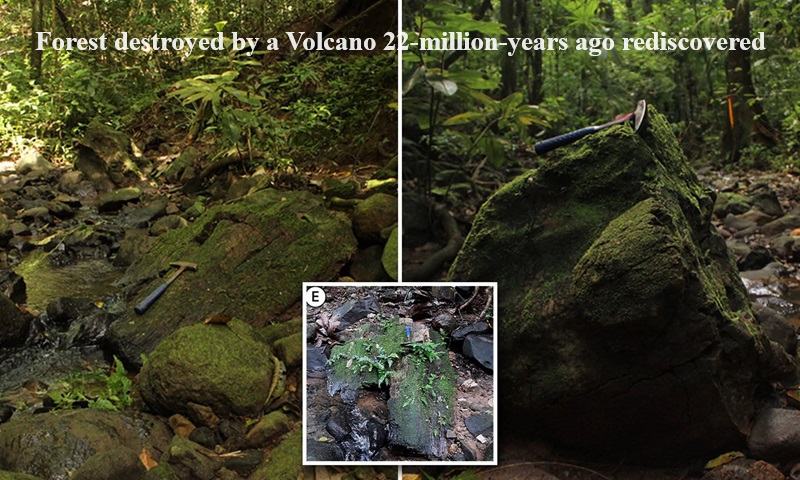
Scientists from the Smithsonian Tropical Research Institute have rediscovered a 22-million-year-old mangrove forest on Barro Colorado Island in the Panama Canal that was wiped out by a massive volcanic eruption. The forest, which once flourished with towering trees and lush green grasses, fell victim to a natural disaster triggered by a lahar—a violent flow of water with mud, ash, and rocks—resulting in complete destruction.
The researchers found 112 preserved fossilized pieces of wood, providing valuable insights into the ancient mangrove forest. The fossils indicate that a massive volcanic eruption triggered a lahar, which swiftly swept away the entire forested land. Lahars, known for their destructive force, leave plants and animals with no opportunity to decompose, preserving the remains as fossils.
The mangrove forest likely originated in the early Miocene Epoch, approximately 23 million years ago, during the collision of South America and the Caribbean plate that formed the landscape of Panama and Central America. Barro Colorado Island emerged from the ocean during this collision. The mangrove forest, featuring trees reaching heights of up to 130 feet, thrived in the brackish zone where salty and fresh waters meet.
The study also highlighted ideal conditions for the ancient mangrove forest, including high atmospheric carbon dioxide concentrations during the Miocene—over 500 parts per million (ppm), compared to approximately 419 ppm today. The elevated carbon dioxide levels allowed the ancient mangrove trees to grow to greater heights than contemporary mangroves, given that trees consume carbon dioxide for growth.
While the rediscovery has provided valuable information about the long-lost mangrove forest, the study is still in its early stages, with the findings expected to be published in the March 2024 issue of the Palaeogeography, Palaeoclimatology, Palaeoecology journal.

Post Your Comments